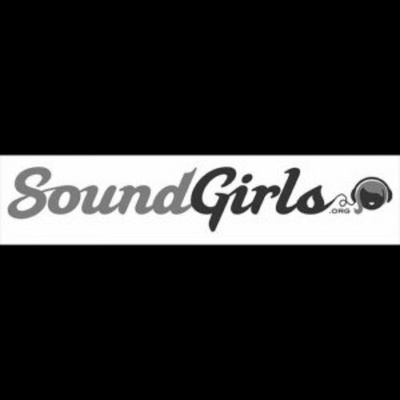Keywords in Sound

During my time at university, I had the pleasure of studying under Dr. Joel Overall, who specializes in writing and rhetoric and has a particular fascination with the intersection of music and persuasion through what is known as sonic rhetoric. Prior to meeting and working with Dr. Overall, I had no idea that this was even a topic of study, but after taking some time to research it, I, too, became completely captivated. Dr. Overall recommended David Novak’s Keywords in Sound to take a closer look at not just sonic rhetoric, but sound in conjunction with “philosophical debates, and core problems in defining, classifying and conceptualizing sound, and sets new challenges for the development of sound studies” (Keywords in Sound). In today’s blog, I am going to highlight the first section of Novak’s novel that left me contemplating my own relationship to sound and the ways in which we use language to define it.
Keywords in Sound takes the idea of sonic rhetoric and divides it into twenty chapters written by twenty different specialists in various audio and linguistic fields. As a casual practitioner of epeolatry, but also someone who has studied sound only in a technological environment, I dove headfirst into this book and only came up to breathe when I turned the last page. In being shown how to analyze sound in this new perspective, I was left feeling both motivated and enlightened. I am excited to share some of my thoughts with you today in what will hopefully become the first of many philosophical deep dives on these pages.
Let’s begin with the introduction so we can get acquainted with the atmosphere of this book. Novak, in partnership with editor Matt Sakakeeny, writes that “sound resides in this feedback loop of materiality and metaphor, infusing words with a diverse spectrum of meanings and interpretations” (Novak, 1). Therefore, it is highly necessary that we are mindful and specific with the language we use to speak about sound, especially as engineers and artists. With the depth that the word, the industry, and the art that “sound” includes, the more specific and focused our language becomes, the more we are able to bring those unfamiliar (and by this I mean lacking specific knowledge and technical understanding) with the topic into the conversation. I find this to be of utmost importance, as sound effects all of us, and dictates the ways in which we live and experience life. Novak and Sakakeeny continue:
“to engage sound as the interrelation of materiality and metaphor is to show how deeply the…separate fields of perception and discourse are entwined in everyday experiences and understandings of sound, and how far they extend across physical, philosophical, and cultural contexts.” (Novak, 1)
When people hear the word “sound”, the first of which comes to mind is the physical experience with it; self-location with reverbnation, waves of music, binary codes for digital formats.
Conceptual sound experiences, such as voice and silence, “circulate not as passive descriptions…but ideas that inform experience” (Novak, 1). We have the ability to hear a person and to hear a person: one is literal, in hearing them talk or yell or sing, whereas the other is to encounter their metaphorical “voice” as a manifestation of their character and their personal beliefs.
As professionals in this industry, it is crucial that we do our part to enhance the study of sound by “saying more about what we mean when we reference sound, and becoming more reflective about how its meanings are positioned within a range of interpretations” (Novak, 5). I would argue that it is our duty to embrace the nuance and engage in depth with the conversations we have around sound, noting the contexts in which it is discussed. For example, Alvin Lucier’s artistic sound study I am sitting in a room can be discussed in several different contexts as both a technical sound analysis and likewise a composed piece of art. These things can and do coexist in the same space, and we would be remiss not to acknowledge a subject’s ability to transform based on context, as is true with our human experiences.
First, Lucier’s piece through the lens of technical sound; the heart of this composition is a feedback loop of frequencies until the ultimate room frequency is reached. I agree with percussionist Trevor Saint in his conclusion that Lucier is an “archaeologist rather than a creator, where he’s just basically making the listeners aware of the world around them,”” (Dankosky). In the artistic perspective Lucier was one of the first to demonstrate a redefinition of “music” in spatial environments, and challenge the objective interpretation of music that had been socially adopted (or rather, constructed). I love the way this idea is referenced in Keywords in Sound, suggesting that:
“the more we follow the trail of sound studies, the more we often bump into things that had always been called music, walking like a ghost through the gleaming hallways of the house that sound built….the generalizability of sound, it its most imprecise uses, can sidestep the effects of institutional histories and the structuring influence of entrenched debates. While we are not endorsing the doctrinaire approaches, the risk of ignoring the historical particularity of sonic categories is the misrecognition of sound’s specific cultural formations.” (Novak, 6)
Sound and music have been synonymous for thousands of years. However, not all sound is music and not all music is sound. Take “4’33” by John Cage. The silence itself is the composition, and yet if you listen to the piece, there is little silence at all. You hear coughing, the shifting of shoes and cloth. If you listen to “4’33” today, you hear the composition of your own environment: car engines, air conditioning, voices in the hall. Cage himself stated that he “thought of music as a means of changing the mind … In being themselves, [sounds] open the minds of people who made them or listened to them to other possibilities that they had previously considered,”(Kostelanetz, 27); in other words, “4’33” is the ultimate musical meditation, transcending and bending the way in which music was defined in the 1950s and promoting a deeper discussion of our relationship to music, sound, and artistic experience. Today more than ever, I believe it is pivotal that we take the necessary steps to address social, cultural, and historical contexts in sound so that we might have the ability to understand, metaphorically, where the intention began, where it is projected to go, and where it ultimately lands.
If it wasn’t already clear, I am wildly passionate about this subject, this meeting place of sonic experience and cultural interpretation– particularly, the philosophical conversations that act as the bridge between them. I find these topics of nuance motivating, and I fear should we forget the subtlety in this field in presuming universality, we will continue the trend of treating sound as a unchanging, predictable and often technologically determined generalization in the social consciousness, which as Novak states “might even be reduced to an entire ‘human condition’” (Novak, 7). I hope in this first installment of my in-depth analysis of sound and language, you feel a newfound sense of invigoration, and might enter your next sound-related conversation a little more mindful of the words you use and the power behind them.
Notes:
Dankosky, John, and Ira Flatow. “The Resonating Room Tones of Composer Alvin Lucier.”
Science Friday, 2 Dec. 2021, www.sciencefriday.com/segments/soundscape-alvin-lucier/. Kostelanetz, Richard. Conversing with Cage. Routledge, 2003.
Novak, David, and Matt Sakakeeny. Keywords in Sound. Duke University Press, 2015.
Article by: Grace Usleman
Editor's Note: At StageLync, an international platform for the performing arts, we celebrate the diversity of our writers' backgrounds. We recognize and support their choice to use either American or British English in their articles, respecting their individual preferences and origins. This policy allows us to embrace a wide range of linguistic expressions, enriching our content and reflecting the global nature of our community.
🎧 Join us on the StageLync Podcast for inspiring stories from the world of performing arts! Tune in to hear from the creative minds who bring magic to life, both onstage and behind the scenes. 🎙️ 👉 Listen now!
